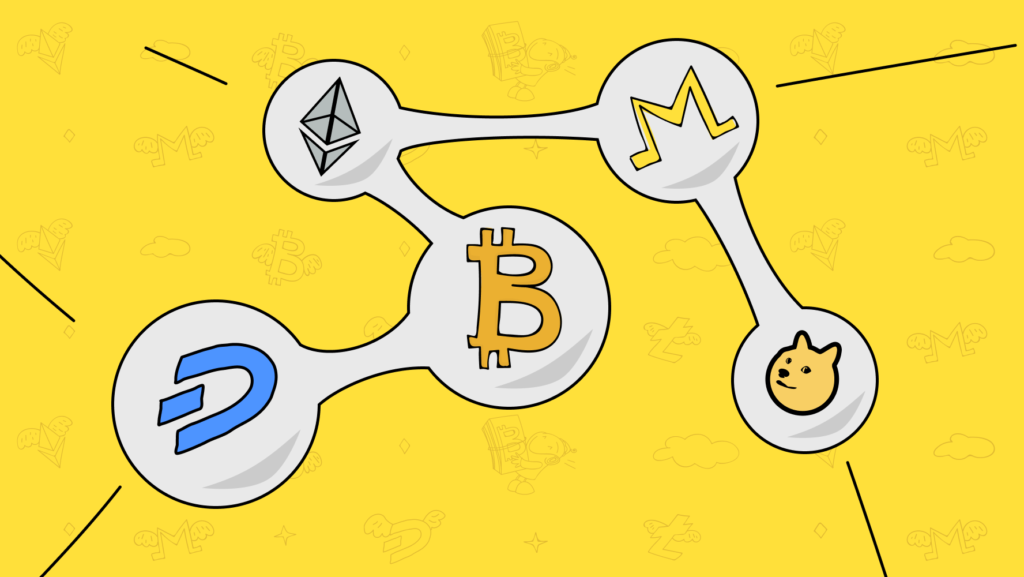
A liquidity pool is a crowdsourced pool of tokens locked in a smart contract that offer liquidity in decentralized exchanges (DEXs) in an effort to mitigate the difficulties created by illiquidity in such systems.
Instead of traditional buyer-and-seller markets, many decentralized finance (DeFi) systems employ automated market makers (AMMs), which allow digital assets to be exchanged automatically and without authorization via liquidity pools.
Because each liquidity pool is made up of two tokens, they are also known as pairs.
A liquidity pool is a smart contract in which tokens are locked in order to provide liquidity.
How do liquidity pools work?
A liquidity pool, at its heart, is a smart contract that regulates the supply of two crypto assets, like USDC and ETH. This type of smart contract is known as an automated market maker (AMM).
Anyone who utilizes the above-mentioned pool to exchange ETH for USDC or vice versa is a member of this pool. When someone makes a deal, regardless of how much or how little they exchange, they pay a fixed cost.
To make this model function, the pool must have a constant supply of USDC and ETH, which is where liquidity providers come in.
A liquidity provider must deposit the same amount of USDC and ETH. We may imagine that many other liquidity providers are doing the same thing so that when someone wants to trade a token, they can do so easily.
When the liquidity provider adds their tokens to the pool, the underlying smart contract will return a “liquidity pool token” representing their stake. They also earn a part of the fees paid by traders who utilize the pool, which is proportionate to the amount of liquidity pledged.
The AMM smart contract that underpins the liquidity pool is constantly rebalancing, quoting prices based on supply and demand.
Liquidity pools seek to address the issue of illiquid markets by motivating users to supply crypto liquidity in exchange for a part of trading costs.
Why Are Crypto Liquidity Pools Important?
Any seasoned trader in traditional or crypto markets will warn you about the risks of investing in a market with minimal liquidity. Slippage will be an issue when attempting to enter — or leave — any deal, whether it is a low-cap cryptocurrency or a penny stock.
The discrepancy between the projected price of a trade and the price at which it is performed is referred to as slippage. Slippage is most prevalent during moments of extreme volatility, but it can also happen when a large order is completed but there is not enough activity at the targeted price to keep the bid-ask spread constant.
The bid-ask spread of the order book for a specific trading pair determines the market order price that is employed in times of high volatility or low activity in a typical order book model. This implies it is the price at which sellers are willing to sell the item and the price at which buyers are willing to acquire it.
Low liquidity, on the other hand, might result in increased slippage, and the executed trading price can greatly surpass the initial market order price, depending on the bid-ask spread for the asset at the moment.
Liquidity pools seek to address the issue of illiquid markets by motivating users to supply crypto liquidity in exchange for a part of trading costs.
Trading utilizing liquidity pool protocols does not need buyer and seller matching. This implies that users may easily trade their tokens and assets utilizing liquidity offered by users and transacted using smart contracts.
Uses of Crypto Liquidity Pools
- Token Distribution: Liquidity mining is also a viable technique for distributing fresh tokens to the correct individuals in various crypto initiatives.
Better efficiency is provided by the algorithmic distribution of tokens to users who have placed their tokens in the liquidity pool.
Following that, the freshly produced tokens are allocated based on each user’s part in the liquidity pool.
- Yield Farming: A way of earning tokens from your crypto holdings. It is been compared to farming since it is a novel approach to “produce your own cryptocurrency.” The procedure entails leasing crypto assets to DeFi in exchange for interest.
The money in the liquidity pool are used to give liquidity to a DeFi protocol, which is used to allow trading, lending, and borrowing.
The platform makes fees by providing liquidity, which are distributed to investors based on their part of the liquidity pool.
Yield farming is often referred to as liquidity mining.
- Governance: The best liquidity pools could also serve as helpful instruments in governance. You could discover a potentially higher threshold of token votes required for establishing a formal proposal for governance. However, pooling funds together as an alternative could help participants rally behind a common cause perceived as significant for protocol.
Advantages
The benefit of employing liquidity pools is that it eliminates the need for a buyer and a seller to agree to swap two assets for a defined price, instead leveraging a pre-funded liquidity pool.
As long as there is a large enough liquidity pool, transactions can take place with little slippage even for the most illiquid trading pairs.
Other users contribute the funds kept in the liquidity pools, and they receive passive income on their deposits through trading fees based on the percentage of the liquidity pool that they provide.
Risks
Impermanent losses are one of the most serious dangers associated with the liquidity pool.
Because of the volatility in a trading pair, liquidity pooling causes a temporary loss of cash for the liquidity providers.
The trading activity of the pool has a significant influence on the asset’s pricing.
Arbitrage traders might benefit from a fluctuation in the asset’s price in relation to the worldwide market price.
Furthermore, pricing algorithms in liquidity pooling may cause slippage difficulties for smaller pools.
Final Thoughts
Liquidity pools are the most current inventive technical intervention in the crypto sector.
They are critical to the viability of the present DeFi technology stack.
Liquidity pools may boost access and yield farming opportunities while also opening up new pathways in DeFi use cases.
On the other hand, they pose various hazards, such as temporary loss and over-reliance on smart contracts.






